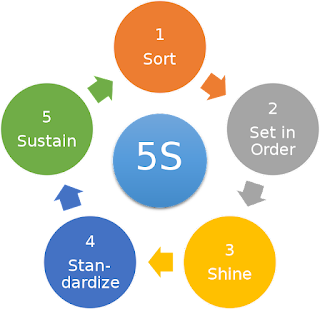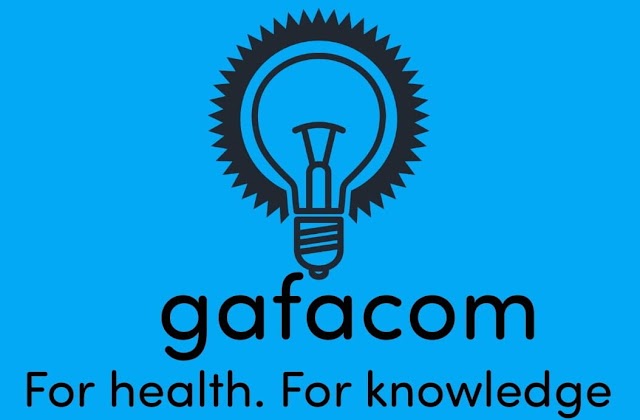Quality improvement and the 5S Approach
Quality is a way to describe a product or service according to set standards, specifications or expectations. The notion of “high quality” has been associated with terms such as excellence, superiority, high caliber, value and worth. Quality is a complex and multidimensional concept and therefore has been defined in many ways, using different terms, labels, and models; the choice of which definition depends on intended use. Quality is also subjective, meaning that it is opinion-based and therefore means different things to different people.
QI Approaches
Several approaches and models of quality improvement have been adopted in delivery of health services. Some of these approaches are:
5S: A management tool used as a systematic approach for productivity, quality and safety improvement in all types of organizations.
Improvement collaborative: An organized network of sites (e.g. districts, facilities or communities) that work together for a limited period of time to rapidly achieve significant improvements in a focused topic area through a red learning and intentional spread methods
Stepwise certification towards accreditation (SCTA): A process of validation in which facilities are evaluated through standard which are set by a responsible board hence upgraded to a specific level such as 2 star, up to 5 star.
Standard based management and recognition (SBMR): is the approach utilizes the performance improvement cycle of measuring actual performance using standards, identifying gaps, determining the root causes of the gaps, and identifying and implementing interventions to address the gaps.
Results based financing (RBF): is an approach that links financing to pre-determined results. Payment is made only upon the verification of the agreed results which have actually been delivered.
Strengthening laboratory management towards accreditation (SMLTA): a structural quality improvement program, teaches laboratory managers how to implement practical quality management systems in resource limited settings using available resources.
 |
| Respublika Narodnaya, original work by Nikita Klyuchko, CC BY-SA 4.0, via Wikimedia Commons |
The 5S Approach
Five-S (5-S) as an entry point for overall health system quality improvement. Five-S is a philosophy and a way of organizing and managing the work place and work flow with the intent to improve efficiency of work by eliminating waste, improving flow, improving safety and minimizing time wasting, often occurring secondary to disorganized environment.
5-S principles are reliable instruments which help to make a break-though in your work environment and staff attending various service provisions in an institution. This is not only a concept but also a set of actions, which has to be conducted systemically with the full participation of staff serving the institution.
5-S activities are practiced in a real participatory movement to improve the quality of both the work environment and service contents, which are delivered to your clients using the improved environment. It is used as a basic, fundamental, systemic approach for productivity, quality and safety improvement in all types’ organizations.
Targets of 5-S
principles are:
- Zero changeovers leading to product/service diversification
- Zero defects leading to higher quality
- Zero waste leading to lower cost
- Zero delays leading to on-time delivery
- Zero injuries thus promoting safety
- Zero breakdowns bringing better maintenance
- Zero customer complaints, i.e., customer satisfaction
- Zero red ink, i.e., betterment of organization’s image.
Furthermore, introduction of 5-S is expected to instill team culture, increase morale and motivation and improve job satisfaction. They are simple but effective methods to organize the workplace (Hirano and Talbot, 1995). In the long-run implementation of the 5-S principles also helps in creating positive altitude to the workforce.
What is 5-S?
Five-S approach is based on the abbreviation for the five terms presented below
1. Sort
Remove unused stuff from your working place by:
· Categorizing and colour coding the items
· Developing inventory list for all categorized items
· Removing all unnecessary items for discarding
· Storing (keeping) “may be needed” items
· Regular sorting of unused items
· Developing a culture of returning items to where they belong
2. Set
It is to organize all necessary items in proper order for easy services provision:
· Organize cabinets with labeling/numbering
· Keep items at their respective areas and label them accordingly
· Post directional arrows leading to service areas
· Label all service rooms
· Update stock/equipment inventories
The rules and regulations must be written and well known to all staff.
3. Shine
To ‘shine’ is to maintain high standards of cleanness. This involves:
· Routine cleaning and mass cleaning campaigns
· Clean not only the place that comes into your view but also behind/under furniture or equipment
Clean and attractive environments will be appreciated by internal & external clients
4. Standardize
To ‘standardize’ is to set up the Sort, Set and Shine as norms in every section of health facility. This involves creating:
· Work instructions
· Standard Operating Procedures (SOPs)
· Standard and regulations for both administrative and technical staff
5. Sustain
To ‘sustain’ is to ensure that all of the other S’s are taking place on an ongoing basis. This involves training and maintaining the discipline of the health workers engaged. This can be done by:
· Applying regular self assessment
· Conducting a quarterly 5-S audit and implementation of improvement activities.
Importance of 5-S Approach
- · The workplace gets cleaned and better organized
- · Hospital and office operations become easier and safer
- · Results are visible to everyone, including insiders and outsiders
- · Visible results enhance the generation of more and new ideas
- · People will be proud about their clean and organized workplace
- · As a result, a health facility’s good image generates more business





0 Comments